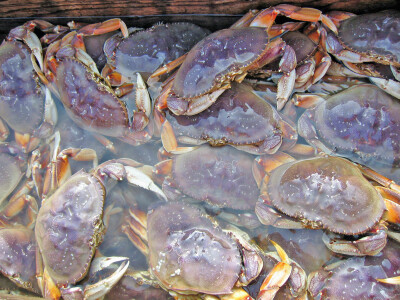Alaska’s inshore cod fishery got a significant upgrade at the state’s Board of Fisheries meeting on Friday, Oct. 19.
The board voted 6 to 1 to increase the fleet’s allocation from 6.4 percent of the total Bering Sea cod quota to 8 percent with an annual increase of 1 percent until it tops out at 15. The Under Sixty Cod Harvesters, a trade group that represents about half of the statewater fleet, had been lobbying to get up to 10 percent and were pleasantly surprised with the 15 percent allocation.
The fishery of pot-cod boats under 60 feet started in 2012 with 1.2 percent of the total Bering Sea cod share. Proponents of the increase argued that the Alaska Constitution mandates development of the state’s resources, prioritizing fisheries with low-impact gear.
“We applaud this board for recognizing how important these open-access statewater fishing opportunities are for our community-based fishermen, and for the young fishermen coming up in the industry,” says Todd Hoppe, president of the Under Sixty Cod Harvesters.
Opponents of the increase largely represent stakeholders in the federal fishery, from which the quota will be siphoned to expand the statewater quota. That includes the freezer-longliner fleet, which has about 50 percent of the quota, and the catcher vessels, which have 21.5 percent.
The move comes at an especially tough time for these historic stakeholders in Bering Sea cod.
“There’s very little recruitment showing up in the stock, and a big chunk of that stock is moving to the north,” says Brent Paine, executive director of the United Catcher Boats, a trade group that represents about 50 trawlers, ranging from about 80 to 130 feet.
Paine expects the North Pacific Fishery Management Council to cut the TAC by 20 percent this year, on top of about 16 percent last year.
“So you get that reduction combined with this statewater increase, and now it’s starting to hurt the federal participants,” Paine says. “It’s tough to get a fair shot [at a state meeting] for federal participants because we’re second-class citizens. The statewater fleet walks into the Board of Fish and says, ‘We’re Alaskans; this is an entry-level fishery… Give us the fish.’ And that’s what happens.”
Paine points out that the federal participants pay research fees to the Alaska Fishery Science Center so NOAA can assess Bering Sea groundfish stocks to set the quotas. They also pay for full observer coverage “and opted out of part-time coverage because we want to know exactly what our bycatch rates are on every boat.”
Paine says it doesn’t make sense for the federal participants to pay for the assessments and give away the quota to a fleet that isn’t contributing to research or monitoring their catch.
“One of the things we asked the Board of Fish is when is enough enough?” Paine says. “What is your game plan for a statewater fishery in the Bering Sea? Do you want to just keep growing it and growing it?”
He says the shrinking quotas and expanded access is creating a race for fish. “This year we opened January 20 and closed February 12 for a 22-day cod season.”
“It’s tough because I know a lot of the boat owners that own these Fred Wahl Super 8s” in the Under Sixty fleet, says Paine. “But they’re creating this fishery at the cost of the historic federal participants.”
Brett Veerhusen, who consults with the Under Sixty group, noted that it’s not strictly a loss for the federal fleet, adding that the percentage of cod shifted from the federal Bering Sea quota to the statewater fleet can be applied to other groundfish species. In the Bering Sea, there is a 2 million metric ton cap for all species, though the limits on cod are now restricting access to other species.
“What they give away in cod, they can take in other fish,” Veerhusen says. “Since cod is a choke species, that means you’re going to have to fish differently to catch those other fish.”
The Under Sixty fleet is important to the state of Alaska because it’s 85 percent owned by Alaskans, as opposed to the federal fishery, which draws more participants from the Lower 48.
“These vessels work year-round and are rooted in Alaska’s communities,” Hoppe says of the statewater fleet. “They deliver fish and income straight into local economies. Supporting this fishery was a good move for the state of Alaska, and I think we’ll see the positive effects of that decision for a long time to come.”
Facing an uncertain future, Paine has not yet lost his perspective or sense of humor.
“It’s a David and Goliath story,” he says. “And David won this one.”







